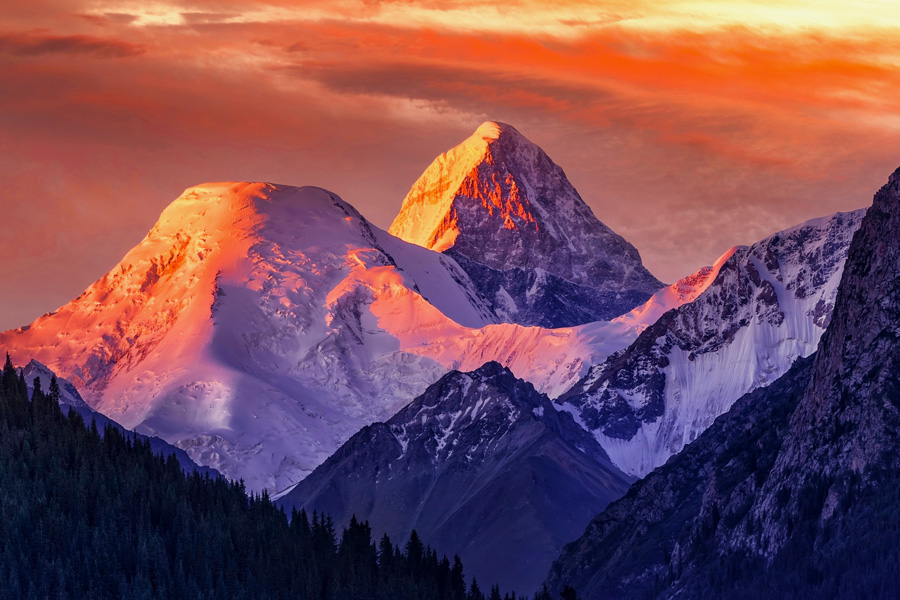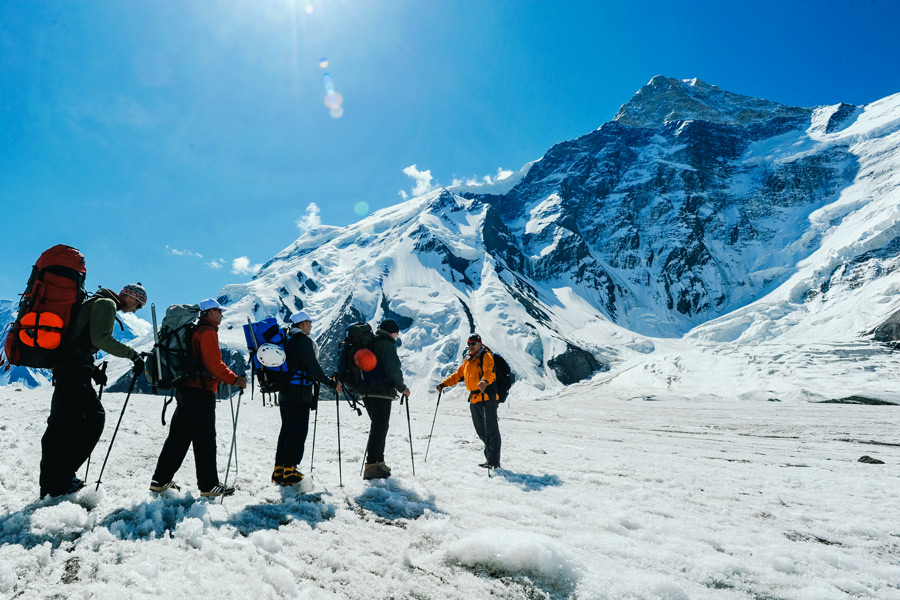
Khan Tengri is located to the east of Lake Issyk-Kul, near the border with Kazakhstan and China. Though the summit is only 6,995 m (22,949 feet), with the glacial cap, the summit rises to 7,010 m (22,999 feet), making this one of the five peaks in Central Asia over 7,000 (22,965 feet), and part of the Snow Leopard prize. Since the marble glows red at sunset, the mountain is known as Kantau, or Blood Mountain, in Kazakhstan. At the foot of Khan Tengri is the Inylchek Glacier, with the disappearing Merzbacher Lake.
There is a long history of confusing Khan Tengri and Pobeda Peak, though both mountains may have been called Khan Tengri by different groups at different times. Pyotr Semyonov was the first European to see the peak, on an expedition in 1957 (though he did confuse it with Pobeda Peak). The first successful summiting was by a Ukrainian team in 1931, and their southern route was the only route up the mountain for another 33 years, until a northern route from Kazakhstan was opened in 1964. Now, there are nine possible routes to the summit.

There is a capsule at the top of the mountain that holds messages from everyone who has ever successfully reached the top. Each new arrival at the peak digs up the capsule and adds a message in pencil (it’s impossible to write with a pen), and then buries it again. Though the ascent can be very dangerous, with a number of people perishing over the years, many mountaineers still come. There are now established routes and base camps, and Khan Tengri is a great place to photograph, with its spectacular pyramid peak. Since it is located in a sensitive border zone, climbers need special border passes to access the peak, a practice that persists from Soviet times, when foreigners were not even allowed to Khan Tengri until 1989.

